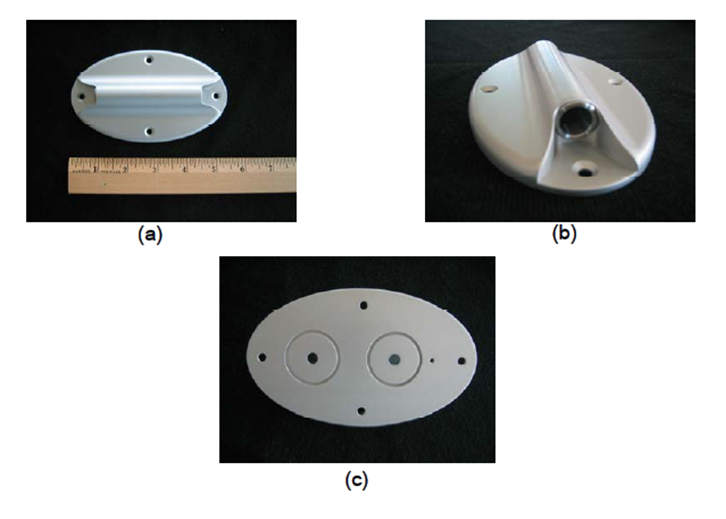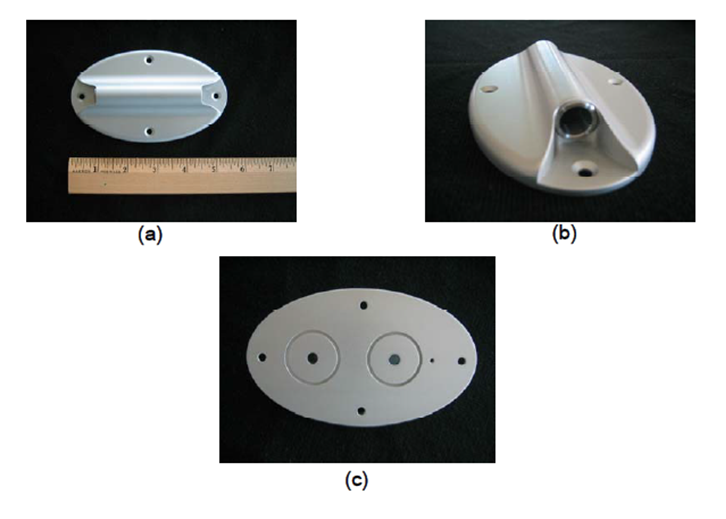The mixing ratios of measured quantities like water vapor and atmospheric trace gases are conserved properties whether they are measured in static conditions, in fully dynamic conditions (including the Mach number effect of the fast moving aircraft), or in conditions between these two extremes. The UCAR air sampler has been designed to take advantage of this fact, thus eliminating the negative features of past probes on jet aircraft, and further designed to optimize conditions in the measurement cell for diode and QC lasers.
(Click Image for Full Resolution)
The diode laser used for water vapor measurements on the WVSS-II operates at 1.37 .m. This wavelength is not absorbed by ice crystals or aerosols, however, a very large number of such ice crystals or aerosols could scatter the laser light and reduce the sensitivity of the diode laser at the cold dry regions of the upper troposphere. Thus, a second goal of the sampler design is to remove ice crystals and aerosols that could hinder the sensitivity of the measurements in the cold, dry upper troposphere. The NCAR air sampler is aerodynamically designed to remove particles from the air flow.
Benefits of Improved Water Vapor Information for Air Carriers and Society
- Nowcasting and Very Short Term Prediction - The addition of the water vapor measurement from the WVSS-II will aid aviation safety, efficiency and capacity. The high resolution ascent/descent data provides aviation support to those researchers engaged in improving aviation safety.
- Extended Range Weather Prediction - Improved weather prediction beyond an hour is important for aviation. Concerns out to 8-10 hours include accuracy in IFR/VFR conditions and storm locations as predicted (dictating alternative landing sites and fuel on board).
- Air Quality Applications - As mentioned above, the use of the new QC lasers with the UCAR air sampler could provide vertical measurements for a large variety of species during ascent and descent.
- Reduced Uncertainty in Global Climate Change

